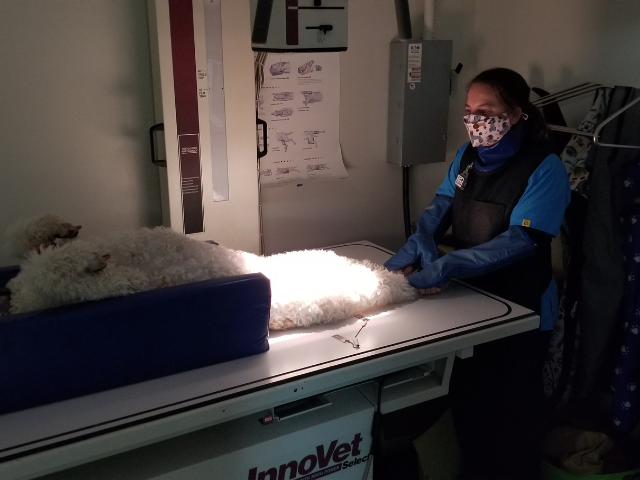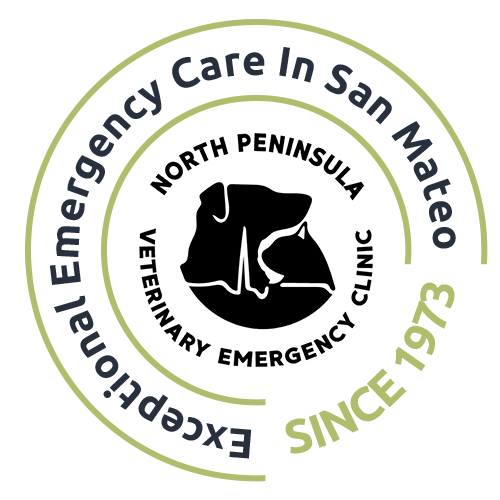
Tests And Procedures We Offer
Diagnostic Tools, Measurements, and Testing
Our medical team has advanced diagnostic tools to assist in identifying the specific problem your pet may be suffering from and to obtain vital measurements to aid in diagnoses.
- Blood analyzer machines to provide immediate complete blood count, chemistry panels, coagulation values
- Urinary analysis machines to evaluate urine for infections, crystals, protein levels, ketones, or to evaluate for increases in certain toxins/chemicals
- Microscopy to aid in identifying blood cell abnormalities, identify urine abnormalities, check for ear and skin mites, and ear and skin infections.
- Blood pressure and pulse oximetry
- Electrocardiograms (EKGs) to evaluate heart rate and rhythm
- Ultrasound to evaluate problems in the abdomen or thoracic cavities in patients
Why Would My Pet Need and EKG or an Echocardiogram?
If your pet has clinical signs such as lethargy, fainting, shortness of breath, exercise intolerance, pale gums, or other irregular behaviors, contact us immediately because these clinical signs may indicate heart disease. If your pet is having heart-related health issues, diagnostic tools such as an EKG or and Echocardiogram (ultrasound of the heart) can be used to help diagnose the underlying abnormality/problem and provide direction to your doctor for treatment options.
Electrocardiography, also referred to as EKG, is a diagnostic tool used to measure the electrical activity of the heart. The recorded measurements can be electronically forwarded to a cardiologist review in real-time, as well as screen for or monitor for any heart abnormalities.Our doctors may recommend an EKG if when listening (ausculting) to the heart with a stethoscope during a physical examination, they identify a heart murmur or abnormal rhythm. An EKG would be performed if there is a plan to schedule anesthesia for your senior pet, or if your animal has any clinical signs of heart-related conditions.
How Do EKGs and Electrocardiography Work?
Veterinarians use EKG testing and echocardiography to evaluate your pet's heart. They are both noninvasive diagnostic tests, that are safe with no risk of exposure to radiation, and only take a few minutes. These tests are generally performed with the pet lying down on a padded table.
The EKG is an effective tool that measures the electrical efficiency of the heart. It is commonly used to evaluate the heart rhythm, identify abnormalities in the heartbeat, and potential damage to the heart muscle and tissue. An echocardiogram uses ultrasound technology, or high-frequency sound waves, produced by a transducer that is directed toward the chest. The echocardiogram can visualize the movement of the heart valves and measure the chambers and some of the large vessels of the heart to identify if there are any structural or dynamic function abnormalities of the heart. These diagnostic testing tools used together can greatly increase the accuracy of diagnosis of many heart conditions for your dog or cat.
Other tests to evaluate heart and circulatory problems include doppler and blood pressure (sphygmomanometry) measurements. to evaluate blood flow and blood pressure, respectively. Both of these testing devices can provide additional information about cardiovascular function.
Radiography
Radiography, also known as x-ray, is one of the most common and valuable medical diagnostic tools in veterinary medicine. Radiographs are highly useful for screening areas of the body that have contrasting tissue densities, or when evaluating solid tissues. We are equipped to perform routine radiographic services to identify abnormalities, illness, or injury when pets are sick or suffer an injury or traumatic event.
Why Would My Pet Need Radiographs?
If your pet is sick or has suffered a trauma, radiographs provide a minimally invasive tool to help our doctors diagnose your pet. Radiographs are also used in general wellness examinations to diagnose potential problems before they become serious.
When Is Radiographic Testing Appropriate?
We may recommend veterinary radiographs as part of a diagnostic procedure if your pet is experiencing adverse health conditions or as a preventive measure in a routine senior wellness examination. We use radiology alone or in conjunction with other diagnostic tools depending on the patient’s condition. We are fully equipped to perform routine radiology services to identify many types of illness or injury when pets are sick or suffer from some sort of trauma.
Clinical signs that may require radiography include vomiting, diarrhea, painful abdomen on palpation, a hunching stance, bloat, or trauma such as falling or being struck by a vehicle.
How Is Radiographic Testing Used?
Radiographs can be used to detect a variety of ailments in animals including arthritis, tumors, bladder and kidney stones, and lung abnormalities such as pneumonia or asthma. They are also used to evaluate bone damage, the gastrointestinal tract, respiratory tract, genitourinary system, organ integrity, and even to identify foreign objects that may have been ingested. In some cases, we may need to sedate your pet or use short-acting general anesthesia to perform radiographs.
Diagnostic Ultrasounds
An ultrasound is a useful tool when evaluating heart conditions, internal organs, cysts and tumors, and diagnosing pregnancy.
Why Would My Pet Need An Ultrasound?
A veterinary ultrasound is an invaluable resource for evaluating heart conditions. It can detect alterations in abdominal organs and assist in the recognition of any cysts and tumors that may be present.
An ultrasound is excellent at evaluating your pet's internal organs and may be recommended when our doctors find abnormalities on bloodwork or radiographs, or to monitor a disease process. Often, radiographs will be used in combination with an ultrasound as they reveal the size, dimension, and position of the organ. With the ability for real-time monitoring, ultrasounds are utilized for pregnancy diagnosis and embryonic development monitoring.
How Does Ultrasound Testing Work?
Ultrasound equipment directs a narrow beam of high frequency sound waves into the area of interest. The sound waves either transmit through, reflect, or absorb in the tissues that they encounter. Any ultrasound waves that are reflected will return as echoes and convert into an image that is displayed on a monitor, giving a 2-dimensional image of the tissues under examination. With the ability to obtain real time information, outcomes can often be identified and treated earlier in the course of an illness.
The ultrasound examination is relatively painless, but occasionally the animal may feel a little discomfort. Light sedation may be used to help the patient lie comfortably while the ultrasound scan is being performed. Your pet may need to be shaved in the area of interest, as veterinary ultrasound images are of better quality if the ultrasound probe has complete contact with the skin.
Ocular (Eye) Examinations
We have the ability to examine the eyes with ophthalmic equipment. We may diagnose ocular abnormalities including (but not limited to) corneal ulcers, uveitis, dry eye, find and remove foreign objects, identify increased ocular pressure, and conjunctivitis.
Advanced Veterinary Equipment
We offer a wide variety of additional services at NPVEC, and we are committed to providing compassionate and expert veterinary care, diagnostic testing, blood transfusions, and more.
Procedures and Treatments
At North Peninsula Veterinary Emergency Clinic we are able to provide the following additional veterinary services to best care for your pet.
Our medical team communicates and works with other specialty departments to provide a comprehensive care plan for your pet’s unique situation. Treatment may include, but are not limited to, the following procedures:
-
Surgical procedures to aid in the treatment of trauma and diseases that affect your pet’s health.
-
Medications that can help manage symptoms and pain, and support your pet’s recovery.
-
Fluid therapy is given to our animal patients to treat vomiting, diarrhea, or other causes of fluid loss. We are also able to provide continuous rate infusions when administering various medications.
-
Oxygen support with a Snyder© unit and incubators for our smaller patients.
-
Thermal regulatory support (warming or cooling) for patients presenting in shock or debilitation, patients suffering from heatstroke, or post-operative hypothermia (e.g. Baer hugger).
-
Endoscopy to remove any gastric foreign objects or to evaluate the stomach or upper intestine for ulcers or other abnormalities.
-
Rhinoscopy and bronchoscopy to look for abnormalities or abnormal objects in the nose, nasal passages, or airways.
-
Transfusions (blood and plasma) for our patients that are anemic as a result of trauma, infectious diseases, post-operative blood loss, toxins, or immune-mediated abnormalities.
-
Whelping assistance for dog and cat patients that are having difficulty giving birth. We have staff fully trained in assisting dogs and cats to give birth (whelp/queen) and in resuscitating neonates post-cesarian section surgical procedures.
-
Isolation Ward – where we are able to treat our patients with highly infectious diseases such as parvovirus or upper respiratory infections.
-
Nebulization and coupage are performed to manage lung and airway infections that may occur with pneumonia
-
Pulse-Oximetry is used to measure an animal’s oxygen saturation
